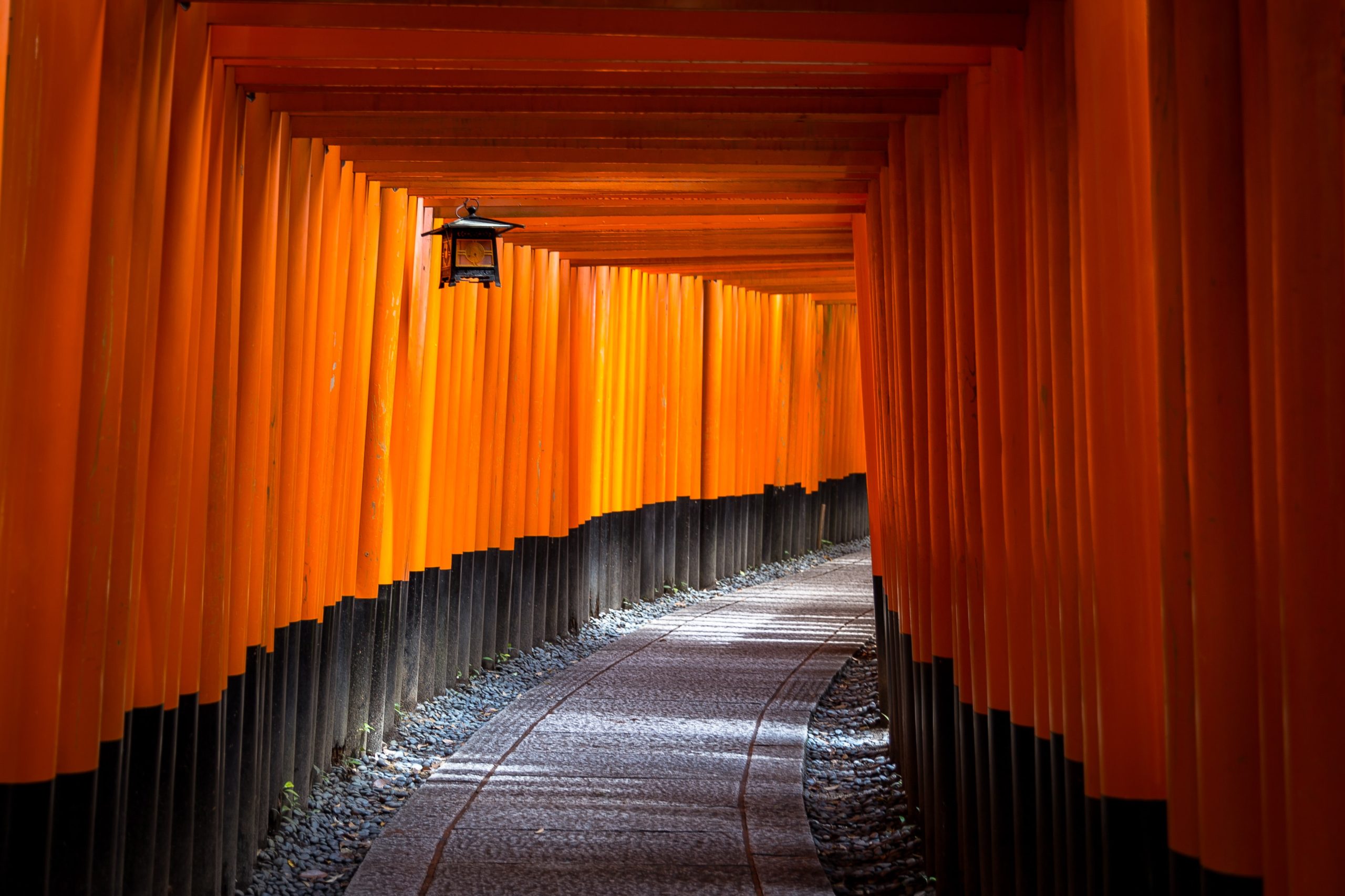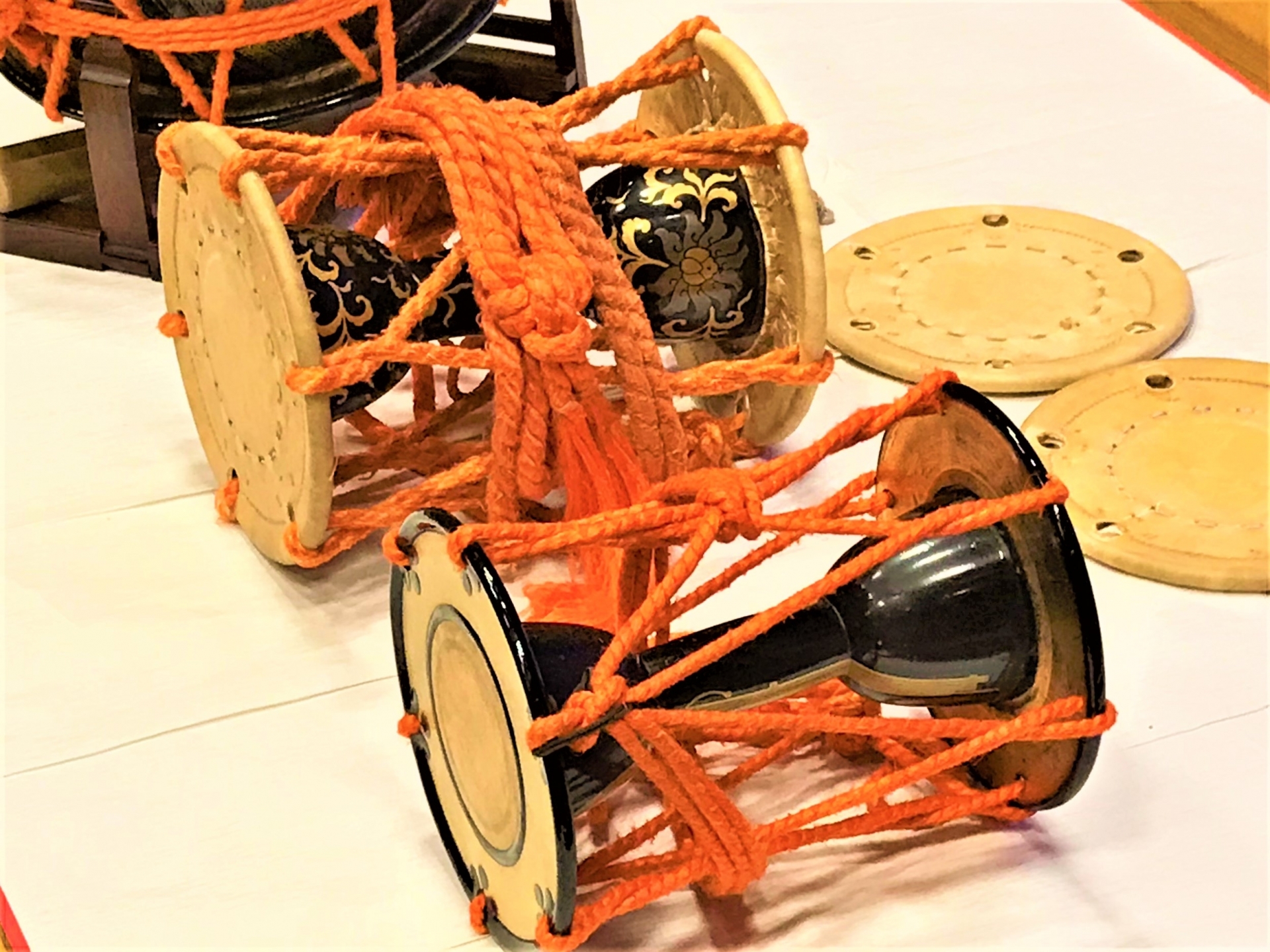白井晃と野村萬斎のトーク Talk between Akira Shirai and Mansai Nomura
Some quotations from Mansai’s comments
*While I have noted many dramatists’ comments and the variety of their online works in response to the current situation, during the self-isolation period I have mainly been objectively considering the role of theatre itself.
*My roots are in the traditional performing arts, so I may be different from the majority of today’s theatre people. However, perhaps because I have always worried whether traditional forms such as Noh and Kyogen could survive, the current covid-19 crisis hasn’t made me so anxious about the continuation of theatre. After all, though Noh and Kyogen have been temporarily suspended in the past due to epidemics or political situations, they have continued for almost 700 years. That makes me believe theatre will never die, even though many people in that world are now in crisis over the future of their jobs.
*I regard theatre as an art form in which people act on stage in front of others, so both actors and audiences share the same place and time. Hence I have my doubts whether theatre lovers can be satisfied with recorded online streaming. For instance, while audiences in a theatre can change their focus of attention as they wish, in a streamed production film directors and camera operators determine that instead.
*Actually, in the Noh world we have also been having a lot of discussion about how to run performances at this time. In many works, around 20 actors and musicians are on the 18 tatami mat-size size (approx. 6 meters square) stage, so it’s a very crowded situation. For example, there are normally eight chorus people (jiutai) arranged in two rows to recite the text. But they can’t do that in the same way under social-distancing conditions, so we may change the style to have one line with five jiutai. We are also talking about the best style of protective facemasks to use.
I suppose similar sorts of questions are arising in contemporary theatre, such as how to portray kissing or hugging.
It’s certainly difficult now. On the other hand, we never have perfect conditions all the time to create theatre, as there are always some restrictions. So now is the time to examine our methods to find the best way to inspire the audiences’ imagination.
*Personally, because I am the Chief Executive Creative Director of the Tokyo Olympics and Paralympics, I hadn’t filled my regular work schedule for this spring. Consequently, this pandemic hasn’t affected my output very much.
When I think about the Olympics, though, I always consider how we can connect the essence of human beings and the latest technology. I usually think we are at the latest point on a line running through humans’ history back to ancient peoples. But I’m probably obsessed with this unbroken timeline because of doing traditional performing arts.
However, although plays will be handed on to future generations, the way someone directs them will not remain as documents — unlike directions for staging Noh and Kyogen, which are written down. So fundamentally, modern plays are one-offs, and people enjoy that unique, momentary character of theatre. Yet despite there being no Yukio Ninagawa or Peter Brook instruction manuals, we have been influenced by their direction a lot and its essence or methodology infuses into our own works. Then later, some young artists will draw on those and sublimate them into their own ways. So, we are simply just at one point on a long and continuously interconnected process of theatre creation.
*While I have noted many dramatists’ comments and the variety of their online works in response to the current situation, during the self-isolation period I have mainly been objectively considering the role of theatre itself.
*My roots are in the traditional performing arts, so I may be different from the majority of today’s theatre people. However, perhaps because I have always worried whether traditional forms such as Noh and Kyogen could survive, the current covid-19 crisis hasn’t made me so anxious about the continuation of theatre. After all, though Noh and Kyogen have been temporarily suspended in the past due to epidemics or political situations, they have continued for almost 700 years. That makes me believe theatre will never die, even though many people in that world are now in crisis over the future of their jobs.
*I regard theatre as an art form in which people act on stage in front of others, so both actors and audiences share the same place and time. Hence I have my doubts whether theatre lovers can be satisfied with recorded online streaming. For instance, while audiences in a theatre can change their focus of attention as they wish, in a streamed production film directors and camera operators determine that instead.
*Actually, in the Noh world we have also been having a lot of discussion about how to run performances at this time. In many works, around 20 actors and musicians are on the 18 tatami mat-size size (approx. 6 meters square) stage, so it’s a very crowded situation. For example, there are normally eight chorus people (jiutai) arranged in two rows to recite the text. But they can’t do that in the same way under social-distancing conditions, so we may change the style to have one line with five jiutai. We are also talking about the best style of protective facemasks to use.
I suppose similar sorts of questions are arising in contemporary theatre, such as how to portray kissing or hugging.
It’s certainly difficult now. On the other hand, we never have perfect conditions all the time to create theatre, as there are always some restrictions. So now is the time to examine our methods to find the best way to inspire the audiences’ imagination.
*Personally, because I am the Chief Executive Creative Director of the Tokyo Olympics and Paralympics, I hadn’t filled my regular work schedule for this spring. Consequently, this pandemic hasn’t affected my output very much.
When I think about the Olympics, though, I always consider how we can connect the essence of human beings and the latest technology. I usually think we are at the latest point on a line running through humans’ history back to ancient peoples. But I’m probably obsessed with this unbroken timeline because of doing traditional performing arts.
However, although plays will be handed on to future generations, the way someone directs them will not remain as documents — unlike directions for staging Noh and Kyogen, which are written down. So fundamentally, modern plays are one-offs, and people enjoy that unique, momentary character of theatre. Yet despite there being no Yukio Ninagawa or Peter Brook instruction manuals, we have been influenced by their direction a lot and its essence or methodology infuses into our own works. Then later, some young artists will draw on those and sublimate them into their own ways. So, we are simply just at one point on a long and continuously interconnected process of theatre creation.


